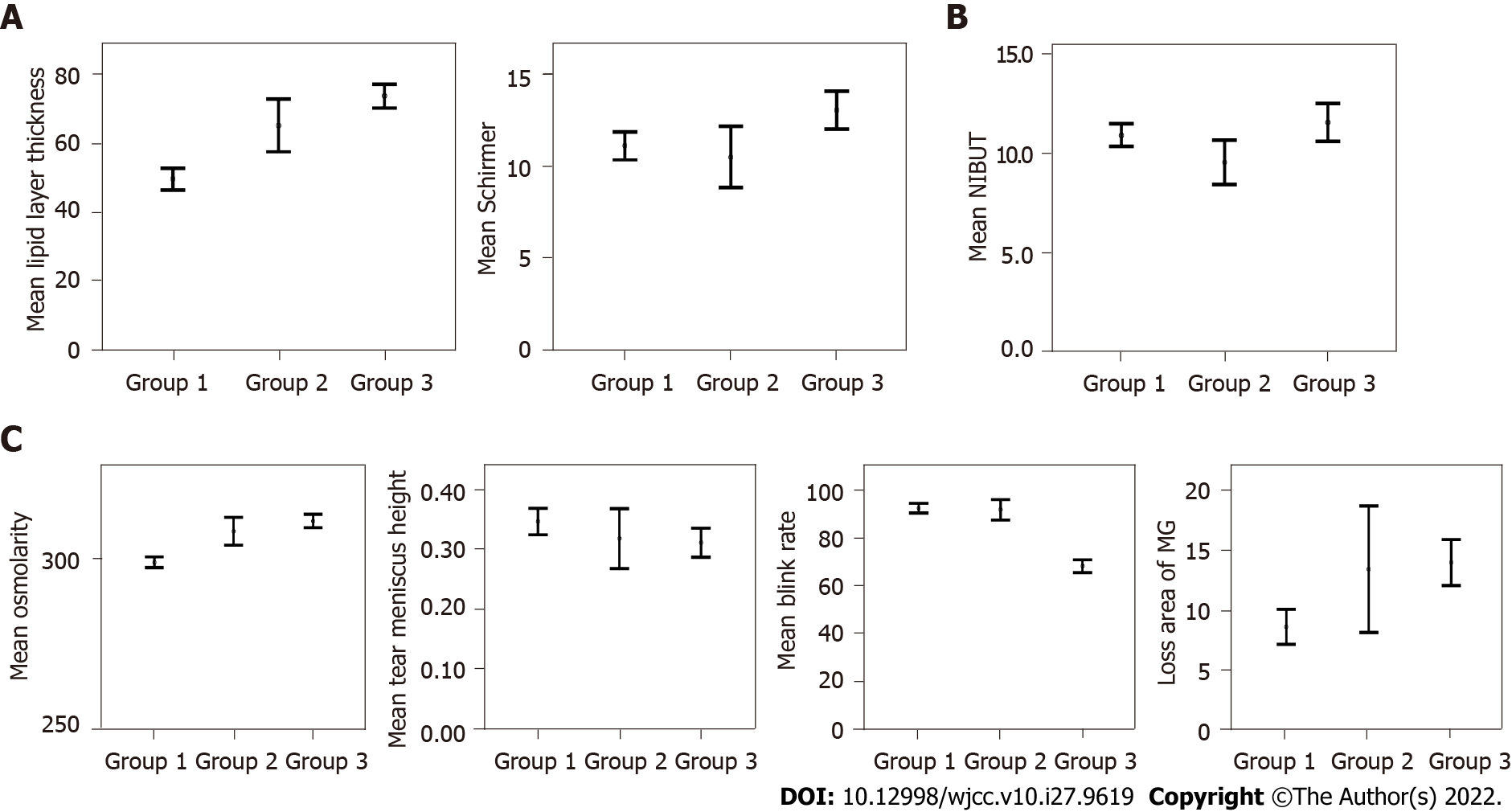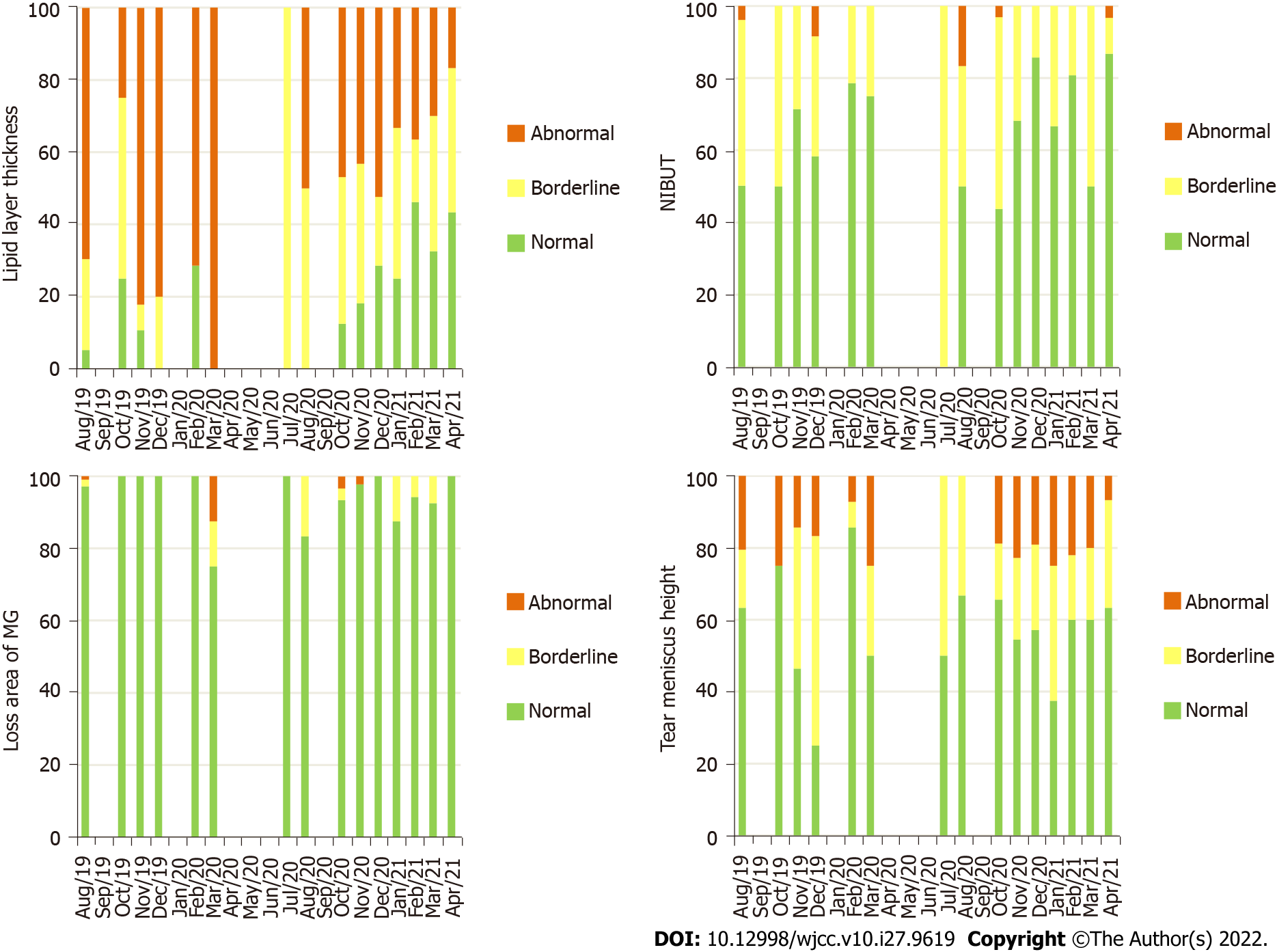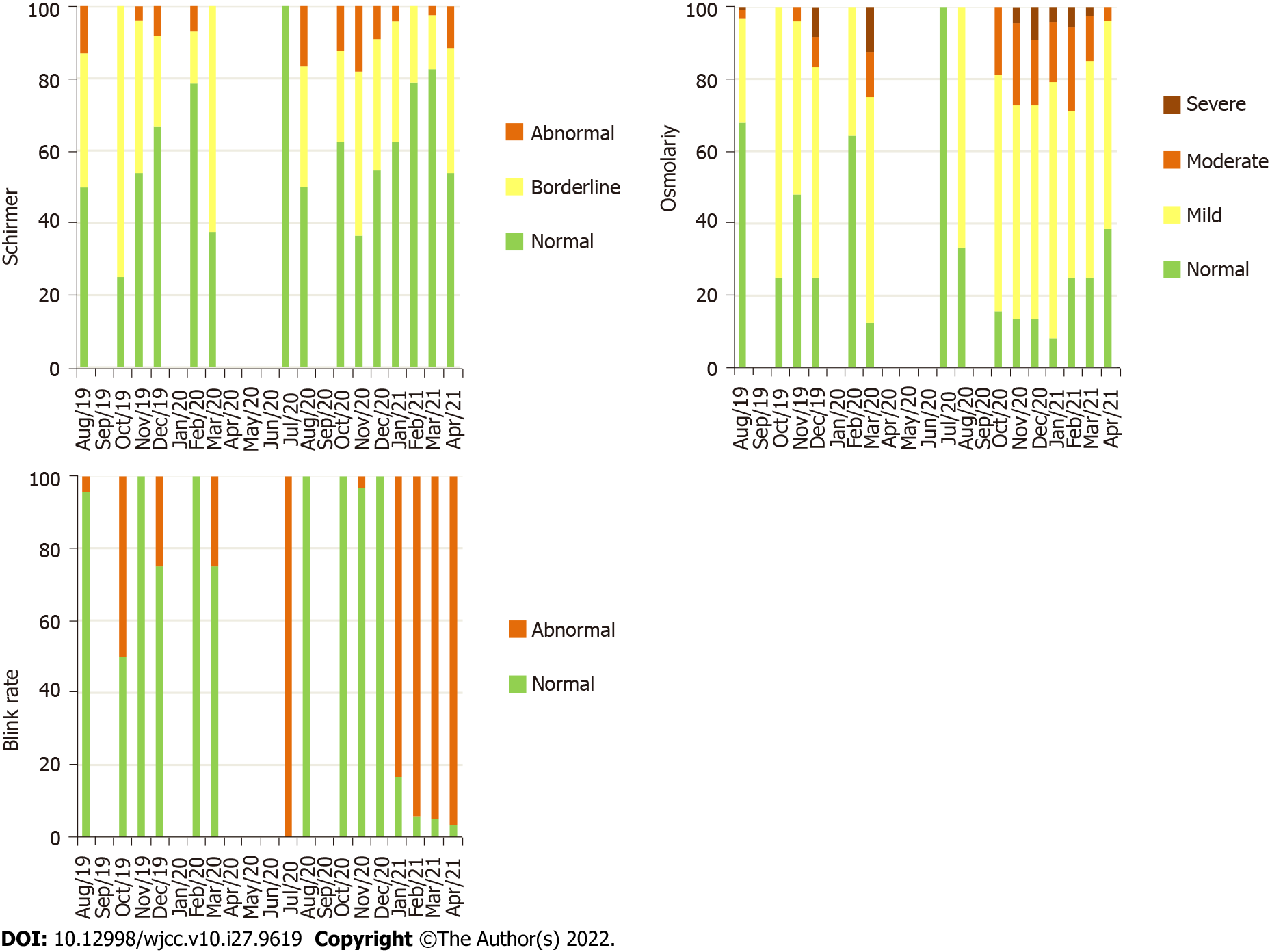Copyright
©The Author(s) 2022.
World J Clin Cases. Sep 26, 2022; 10(27): 9619-9627
Published online Sep 26, 2022. doi: 10.12998/wjcc.v10.i27.9619
Published online Sep 26, 2022. doi: 10.12998/wjcc.v10.i27.9619
Figure 1 Lipid layer thickness, Schirmer test, non-invasive break-up time, osmolarity, tear meniscus height, blink rate, and loss area of meibomian gland means before lockdown (from August 2019 to March 2020 - group 1), after lockdown without mask mandate (from April 2020 to October 2020 - group 2), and after lockdown with mask mandate (from November 2020 to April 2021 - group 3).
A: Variables that improved after lockdown with mask mandate included: Lipid layer thickness (P < 0.001) and Schirmer test (P = 0.002); B: Variable that did not change after lockdown with mask mandate included: Non-invasive break-up time (P = 0.263); C: Variables that worsened after lockdown with mask mandate included: Osmolarity (P < 0.001), tear meniscus height (P = 0.038), blink rate (P < 0.001), and loss area of meibomian gland (P < 0.001). NIBUT: Non-invasive break-up time; MG: Meibomian gland.
Figure 2 Tear meniscus height, lipid layer thickness, Schirmer test, loss area of meibomian gland, blink rate, non-invasive break-up time, and osmolarity grade frequencies before lockdown (from August 2019 to March 2020 - group 1), after lockdown without mask mandate (from April 2020 to October 2020 - group 2), and after lockdown with mask mandate (from December 2020 to April 2021 - group 3).
Tear meniscus height grade: Abnormal (< 0.22), borderline (> 0.44), and normal (0.22-0.44). Lipid grade: Abnormal (< 60), borderline (60-80), and normal (> 80). Schirmer test grade: Abnormal (< 5), borderline (5-10), and normal (> 10). Loss area of meibomian gland grade: Abnormal (> 60), borderline (40-60), and normal (< 40). Blink grade: Normal (90-100) and abnormal (< 90). Non-invasive break-up time grade: Abnormal (< 5), borderline (5-10), and normal (> 10). Osmolarity grade: Abnormal (> 320), borderline (300-320), and normal (< 300). A: Variables that did not change the frequency of the grade included: Tear meniscus height (P = 0.598) and loss area of meibomian gland (P = 0.529); B: Variables that improved the frequency of the grade along with groups included: Lipid layer thickness (P < 0.001) and Schirmer test (P = 0.013); C: Variables that worsened the frequency of the grade included: Blink rate (P < 0.001), non-invasive break-up time (P < 0.001), and osmolarity (P < 0.001). MG: Meibomian gland; NIBUT: Non-invasive break-up time.
Figure 3 Loss area of meibomian gland, tear meniscus height, lipid layer thickness, and non-invasive break-up time grade frequencies between August 2019 and April 2021.
Between April 2020 and June 2020, no evaluation was performed due to the lockdown. Loss area of meibomian gland grade: Abnormal (> 60), borderline (40-60), and normal (< 40). Tear meniscus height grade: Abnormal (< 0.22), borderline (> 0.44) and normal (0.22-0.44). Lipid grade: Sbnormal (< 60), borderline (60-80), and normal (> 80). Non-invasive break-up time grade: Abnormal (< 5), borderline (5-10), and normal (> 10). MG: Meibomian gland; NIBUT: Non-invasive break-up time.
Figure 4 Schirmer test, blink rate, and osmolarity grade frequencies between August 2019 and April 2021.
Between April 2020 and June 2020, no evaluation was performed due to the lockdown. Schirmer test grade: Abnormal (< 5), borderline (5-10), and normal (> 10). Blink grade: Normal (90-100) and abnormal (< 90). Osmolarity grade: Abnormal (> 320), borderline (300-320), and normal (< 300).
- Citation: Marta A, Marques JH, Almeida D, José D, Sousa P, Barbosa I. Impact of COVID-19 pandemic on the ocular surface. World J Clin Cases 2022; 10(27): 9619-9627
- URL: https://www.wjgnet.com/2307-8960/full/v10/i27/9619.htm
- DOI: https://dx.doi.org/10.12998/wjcc.v10.i27.9619












